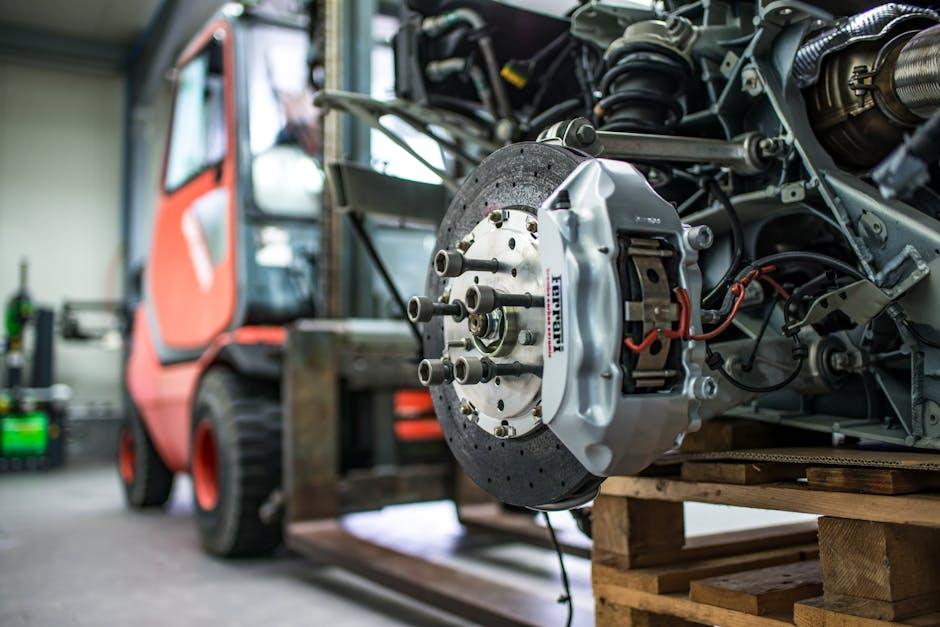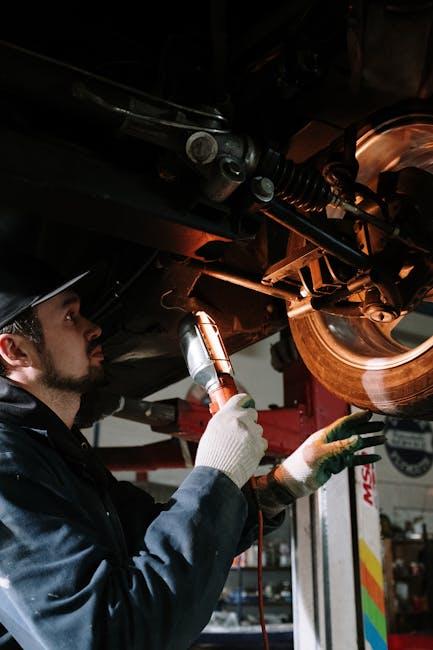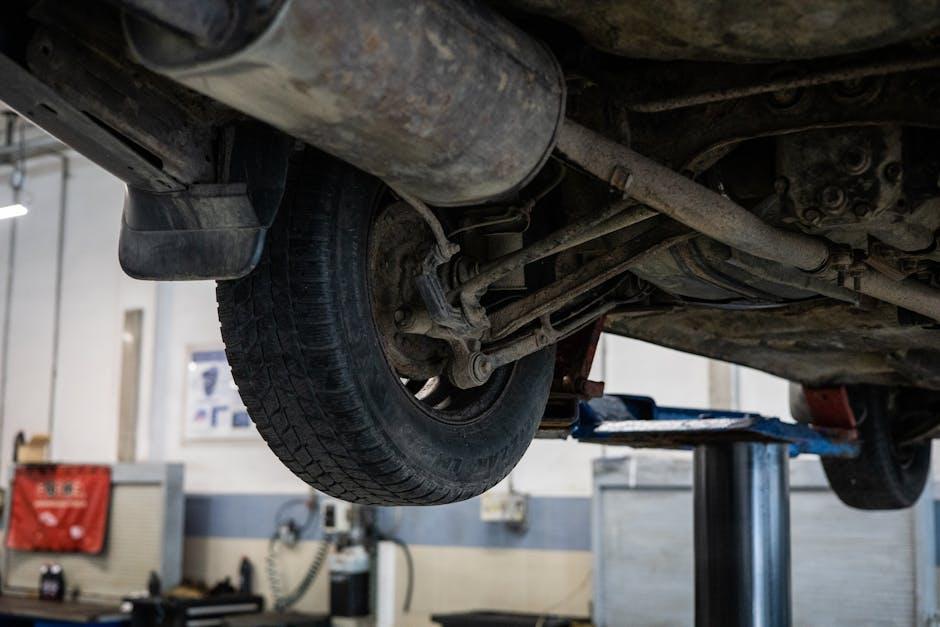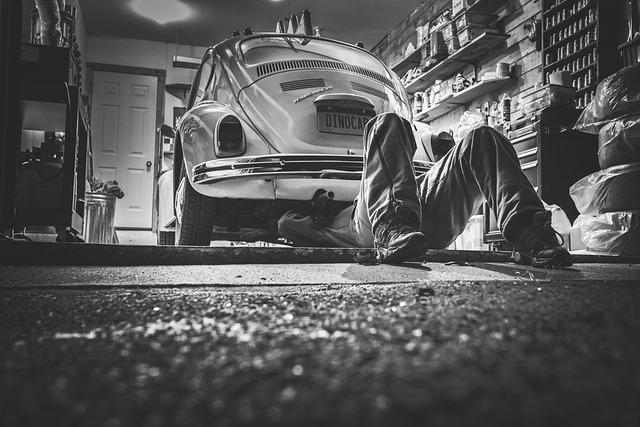When your car hits a bump in the road and starts to feel less like a smooth ride and more like a jolting adventure, the culprit is often the suspension system. It’s the unseen hero working tirelessly behind the scenes to keep every drive comfortable and controlled. But when suspension components wear out or fail, repairs can catch drivers off guard—especially when it’s time to open the wallet. So how much do suspension repairs cost? This question is more complex than just a simple price tag. In this article, we’ll break down the factors that influence suspension repair expenses, help you understand what to expect, and guide you toward making informed decisions that keep your vehicle—and your budget—running smoothly.
Table of Contents
- Understanding the Components That Influence Suspension Repair Costs
- Common Suspension Problems and Their Price Ranges
- Comparing Labor and Parts Expenses for Suspension Repairs
- How Vehicle Make and Model Affect Suspension Repair Pricing
- Tips for Choosing Affordable and Reliable Suspension Repair Services
- Preventative Maintenance Strategies to Reduce Suspension Repair Bills
- Q&A
- To Wrap It Up

Understanding the Components That Influence Suspension Repair Costs
Suspension repair costs are influenced by a variety of key factors that vehicle owners often overlook. The type and extent of damage play a significant role, whether it’s a simple shock absorber replacement or a full suspension system overhaul. Additionally, the make and model of the vehicle can heavily impact the price; luxury or specialized vehicles usually require parts that are more expensive and harder to source. Labor costs vary as well, depending on the complexity of the suspension system and the expertise of the mechanic.
Here are some crucial elements that typically shape the final repair bill:
- Parts Quality: Genuine OEM parts versus aftermarket alternatives.
- Labor Time: Duration required to diagnose and fix the issue.
- Severity: Minor fixes like bushings replacements cost less than major component failures.
- Vehicle Age: Older cars might require more extensive repairs due to wear and tear.
- Geographical Location: Service costs differ based on regional market rates.
To better visualize typical costs, the table below summarizes estimated price ranges based on common suspension repairs:
| Repair Type | Estimated Cost | Typical Time |
|---|---|---|
| Shock Absorber Replacement | $200 – $500 | 1-3 hours |
| Strut Assembly Repair | $400 – $900 | 2-4 hours |
| Control Arm Replacement | $250 – $600 | 1.5-3 hours |
| Full Suspension Overhaul | $1000 – $3000+ | 6+ hours |

Common Suspension Problems and Their Price Ranges
When it comes to suspension repairs, certain issues tend to pop up frequently, each carrying its own price tag depending on severity and vehicle type. Common problems include worn-out shocks or struts, broken springs, and damaged control arms. For instance, replacing shocks can cost anywhere between $150 to $300 per wheel, while strut replacements might run slightly higher, due to their more complex structure and installation. Springs, on the other hand, vary broadly but generally range from $200 to $400. Additionally, bushings and ball joints, crucial for smooth pivoting and shock absorption, usually require less investment but should never be overlooked.
To help you better understand these variations, here’s a quick overview of typical suspension problem costs:
| Suspension Part | Estimated Price Range | Notes |
|---|---|---|
| Shock Absorbers | $150 – $300 per wheel | Depends on brand and vehicle model |
| Struts | $300 – $700 per axle | Includes mounting components |
| Coil Springs | $200 – $400 | Price varies with vehicle weight |
| Control Arms | $250 – $500 | Labor-intensive replacement |
| Ball Joints & Bushings | $100 – $300 | Essential for steering stability |
Pro tip: Regular inspections and prompt attention to minor suspension issues can significantly reduce repair costs and avoid dangerous driving conditions. Keeping an eye out for unusual noises, uneven tire wear, or a bouncy ride will save your wallet — and your safety — in the long run.

Comparing Labor and Parts Expenses for Suspension Repairs
When considering suspension repairs, the distinction between labor and parts costs becomes crucial. Labor expenses often reflect the complexity of the job and the expertise required, with some repairs demanding several hours of precise work. For instance, replacing a set of shocks can range from a quick job to one involving intricate disassembly, significantly affecting the final bill. Labor rates vary widely by region and shop type, from about $75 to $150 per hour, making the total labor cost highly variable depending on location and mechanic skill.
Parts costs, on the other hand, can be surprisingly diverse, largely influenced by the quality and brand chosen. Here are some typical components with their price tiers:
- Shock absorbers: $50–$200 each
- Control arms: $100–$400 per arm
- Ball joints: $20–$100 each
| Component | Average Parts Cost | Estimated Labor Hours |
|---|---|---|
| Shock Absorber | $100 | 1.5 |
| Control Arm | $250 | 2.5 |
| Ball Joint | $60 | 1 |
By balancing these factors, vehicle owners can make more informed decisions on repairing or replacing suspension parts and understanding how much they’re paying for quality parts versus skilled workmanship.

How Vehicle Make and Model Affect Suspension Repair Pricing
The type of vehicle you own plays a significant role in determining suspension repair costs. Luxury brands like BMW or Mercedes-Benz often require specialized parts and expert labor, which can drive prices higher. Conversely, domestic or more common models such as Ford or Toyota typically have readily available components, making repairs more affordable. Additionally, the complexity of the suspension design—whether it’s a simple strut assembly or an advanced air suspension system—affects the overall expense. Vehicles equipped with adaptive or electronically controlled suspensions generally incur higher costs due to the need for diagnostic tools and recalibration.
Here’s a quick look at how various factors tied to vehicle make and model influence the price range:
- Parts Availability: Hard-to-find parts raise costs significantly.
- Labor Expertise: Exotic or complex models demand specialized mechanics.
- Suspension Type: Air or magnetic suspensions increase both parts and labor charges.
- Vehicle Age: Older models might require refurbishing rather than replacement, altering costs.
| Vehicle Category | Typical Suspension Type | Estimated Repair Cost Range |
|---|---|---|
| Economy | MacPherson Strut | $200 – $500 |
| Luxury | Air Suspension | $800 – $2,500 |
| Sports | Multi-link | $600 – $1,500 |
| Trucks/SUVs | Heavy-duty Coil/Torsion | $400 – $1,200 |

Tips for Choosing Affordable and Reliable Suspension Repair Services
When looking for dependable suspension repair services that won’t break the bank, it’s essential to do a bit of homework first. Focus on shops that specialize in suspension systems, as their expertise typically translates into more accurate diagnostics and efficient repairs. Don’t hesitate to ask for detailed quotes—a reputable service provider will clearly break down parts, labor, and any additional fees. Also, check for warranty offers or guarantees on repairs; these often signal confidence in their workmanship and provide peace of mind.
Another great way to ensure you’re getting good value is to seek out customer feedback and consult multiple mechanics before committing. Keep an eye out for these indicators:
- Transparent communication: They explain the problem and solutions without jargon.
- Fair pricing: Estimates that align broadly with industry standards.
- Certified technicians: Credentials ensure up-to-date knowledge on modern suspension systems.
| Service Type | Average Cost | Typical Warranty |
|---|---|---|
| Shock Absorber Replacement | $200 – $400 | 6 months – 1 year |
| Strut Repair | $300 – $700 | 1 year |
| Ball Joint Replacement | $150 – $350 | 6 months |

Preventative Maintenance Strategies to Reduce Suspension Repair Bills
Consistently attending to your vehicle’s suspension system can mean the difference between a modest investment and a hefty repair bill. Simple actions like routinely checking tire pressure, ensuring proper wheel alignment, and inspecting shocks and struts for leaks are powerful preventative moves. Keeping these fundamentals in check helps absorb road impacts more effectively and prevents premature wear on suspension components.
Consider adopting these maintenance habits to stretch the life of your suspension:
- Rotate tires every 5,000 to 7,000 miles to promote even wear and reduce strain on suspension parts.
- Get regular wheel alignments to avoid uneven tire wear and unnecessary stress on suspension joints.
- Replace worn bushings and ball joints promptly to prevent cascading failures in the suspension system.
- Wash undercarriage frequently especially during winter months to remove corrosive road salt.
| Maintenance Action | Recommended Interval | Estimated Cost |
|---|---|---|
| Tire Rotation | Every 5,000 – 7,000 miles | $20 – $50 |
| Wheel Alignment | Annually or after suspension work | $75 – $120 |
| Shock Absorber Inspection | Every 20,000 miles | Free (visual check) or $50-100 (professional) |
| Bushing Replacement | As needed | $150 – $300 |
Q&A
Q: What factors influence the cost of suspension repairs?
A: Suspension repair costs vary widely depending on the type of vehicle, the extent of the damage, and the specific components needing replacement or repair. Factors like whether you need a simple shock absorber replacement or a full suspension overhaul significantly affect the price.
Q: On average, how much can I expect to pay for suspension repairs?
A: Generally, basic repairs such as replacing shocks or struts might cost between $200 and $500 per axle. More complex repairs involving control arms, ball joints, or bushings can push the price anywhere from $500 to over $1,000.
Q: Are parts or labor usually the bigger expense in suspension repairs?
A: Both parts and labor contribute substantially to the total cost, but labor can often be more expensive, especially if the repair requires specialized tools or extensive disassembly. High-end or performance vehicles may also have pricier parts, adding to the overall bill.
Q: How does vehicle type impact suspension repair costs?
A: Luxury, vintage, or heavy-duty trucks often have suspension systems that are more complex or use specialized parts, resulting in higher repair costs. Economy cars usually have simpler and more affordable suspension components.
Q: Can I save money by ignoring suspension issues?
A: Ignoring suspension problems can lead to more serious damage, affecting safety and vehicle control. Over time, this neglect can cause uneven tire wear, poor handling, and potentially higher repair bills, making early attention more cost-effective.
Q: Is it worth investing in suspension upgrades during repairs?
A: Upgrading suspension parts during repairs can enhance performance and comfort but may increase costs. If your current suspension is worn out, investing in quality replacements might provide long-term benefits that justify the expense.
Q: How do I ensure I’m getting a fair price on suspension repairs?
A: Getting multiple quotes from reputable mechanics or shops, asking for detailed estimates, and understanding the parts and labor involved can help you gauge fair pricing. Checking reviews and certifications also ensures quality work that aligns with the cost.
Q: Can I perform any suspension repairs myself to save money?
A: Basic maintenance tasks like inspecting components or replacing simple parts can be DIY-friendly for those with mechanical skills. However, most suspension repairs require specialized tools and expertise, so professional service is often safer and more reliable.
To Wrap It Up
In the end, the cost of suspension repairs varies as much as the roads we travel—shaped by factors like vehicle type, damage severity, and parts quality. While the price tag might give your wallet a little jolt, investing in a healthy suspension ensures a smoother ride and safer journey ahead. By understanding what influences these costs, you’re better equipped to navigate repair decisions with confidence, keeping your drive steady no matter where the road takes you.

